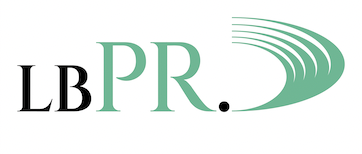The Virtual Production Revolution, Pt. 3
Pt. 3 - Fix it in Pre
From the filmmaker’s point of view, virtual production brings control of the overall ‘vision’ of a production to the front end of the process – the pre-production. Traditionally, filmmaking has been a linear process – development, pre-production, production and post-production (with fingers crossed!). ‘Fix it in post’ became the get-out mantra for mistakes, omissions or afterthoughts during production.
Image courtesy of Quite Brilliant - www.quitebrilliant.co.uk
This all changes with virtual production. Instead, accurate pre-planning and previsualisation is not just possible, but essential. Storyboarding, art department, scenic design, shot-planning, scene blocking, choreography, visual effects and almost every other creative strand can carefully plan their work ahead of principal photography, through what’s now termed the Virtual Art Department, all overseen by a Virtual Production Supervisor.
VP is about ‘pre’ rather than ‘post’. In filmmaking, time is money and a great deal of both can be saved by the detailed proof of concept that virtual production enables. With so much of the final vision prepared in this powerful virtual world, previsualisation capabilities are immense. Previs can be so thorough that final pixel VFX can be captured in-camera – a major step forward.
Previs work can employ stand-in actors fitted with mocap sensors, and because the ‘set’ largely exists in a CG world, virtual camera positions can be used to test out shot choices. Of course, there’s still ample opportunity for the director and DP to be creative during photography, but the previs can offer a timesaving starting point, one where most of the thinking has already been done.
“Of course, there’s still ample opportunity for the director and DP to be creative during photography, but the previs can offer a timesaving starting point, one where most of the thinking has already been done.”
Virtual production gives the capability to previsualise a film in advance of photography, which presents a fascinating creative opportunity for filmmakers. The 2020 film Call of the Wild, based on the Jack London novel and starring Harrison Ford, was previewed to a test audience entirely in previs, using Epic’s Unreal engine, before a camera was even used.
When it comes to location shooting, the savings – both financial and environmental – become very significant. Not having to physically transport a film unit and support services to a remote location (for a few weeks of unpredictable shooting conditions!) is an attractive option for producers. Just capture a few minutes of the optimum sunlight conditions, take it back to the studio and use it at your leisure.
In a virtual background creation, lighting and scenic changes can also be implemented quickly from the Brain Bar, saving on hardware, crews and time. Want that shot at sunrise? You can have the sunrise all day long – or all night – if you like. Want the sun a bit higher? The light a bit warmer? Get rid of that rock? Done. In real-time. Creative teams can all contribute to and agree the shared vision for the production during the extended prep period - before the costs of studio time and talent are incurred.

